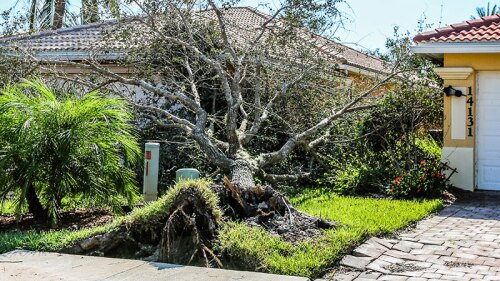ULI members discuss the influence of social media, the internet, and smartphones on consumer behavior, as well as the promise of technology to enhance the design, construction, and operation of buildings.
What technology has had the biggest impact on the real estate industry in the past few years, and why?
Alan Billingsley: Online retailing has had the biggest effect on the industry and has reduced demand for space overall. It will continue to reduce demand for space. It’s also changing the nature of the remaining retail space. RREEF did a study recently [Bricks and Clicks: Rethinking Retail Real Estate in the E-Commerce Era, July 2012], and it found that online purchases make up 5 percent of overall sales, but certain sectors of retail are much more heavily impacted by online retailing, like books, records, apparel, and electronics. Retailers are building smaller stores with less inventory, and they’re building fewer stores. Technology has helped them have more elaborate delivery systems. People can go into a store, get an idea of what they want, maybe even try something on for size, and then buy it at the store for delivery. You can see, touch, feel the product, but the actual product you buy may not actually be in the store.
Rajesh Chandnani: The iPhone and tablets have had a huge impact on the hotel industry. Several hotels are installing iPads in rooms so guests can receive the morning newspaper digitally, view room service menus, and control temperature, air conditioning, lights, or the draperies. With the iPhone, people are able to choose apps to book their rooms and conduct price comparisons. Some consumer-oriented apps allow people to walk down a street and see which hotels have rooms available and view the best rate offering available. As a result, people are being much more fluid in their travel decisions.
Brenda Dohring Hicks: Google Earth is something real estate professionals use all the time now. You’re talking on the telephone with someone about a certain property, and you can pull it up on Google Earth and really see it from all sides: the context, what it looks like from the roof. Customer relationship management [CRM] software is also a big deal now. We brought out a CRM product back in 2001, and when I would speak to brokerage firms then, people looked at me like I was crazy; there was no way that they wanted to do anything but have their contacts in their e-mail [program]. Now everybody understands that proprietary systems allow brokers or salespeople to keep information private and only share what they want to share. They still get the benefits of instant access from anywhere and a history of the last time they called a contact and what they talked about.
Laurie Baker: Social media are having a profound impact on the way we market to, acquire, and retain our customers—from blogs, Facebook, Twitter, YouTube, LinkedIn, ratings sites (Yelp, TripAdvisor, Apartmentratings.com), and closed networks, like [the online community portal] ActiveBuilding. Probably the most impactful for our industry are the ratings sites. Responding quickly to ratings in a professional and meaningful manner is key to mitigating the negative impact an unfavorable rating can have on a community. At the corporate level, Camden uses tools like Google Alerts, TweetDeck, and various digests to track what is being said. We have not found an enterprise tracking tool to meet the needs of our industry, but we are excited to be testing a new product for social mediamonitoring that will be powered by RentAdvisor. All of that tracking leads to identifying trends, engaging with customers, capitalizing on the exposure, and gaining brand recognition.
Adam Ducker: Logistics enabled by better and more mobile technology has really been a game changer in construction. Today’s information management systems allow much more precise ordering and delivery scheduling. That makes staging and construction much more efficient. Particularly as we continue to refocus development activity onto urban places, storage and logistics are premium, so information management is really important in facilitating that transition. Another technological change is the very recent rise of big data, which allows us to not only understand consumer trends, but also manage real estate inventory and real estate information through algorithms. We can draw critical information about the way people are using real estate in real time to engage in dynamic pricing and analyze customer usage patterns. Hotels have used dynamic pricing for a long time, and now apartment building owners are, too. This will continue to evolve very rapidly.
How are social networking and smartphones changing consumer demand and behavior?
Baker: During a recent focus group, we learned that our prospective residents first drove around an area or neighborhood to look for a new place to live. Most of them then used smartphones in their car to quickly look for information about a community they saw. Having a mobile-optimized platform is critical for property owners. Camden launched our mobile platform in 2011, and since then we have seen a 400 percent increase in mobile use, which proves consumer behavior is changing. Our residents are using smartphones for paying rent, submitting service requests for maintenance, and participating in our closed social network.
Ducker: Everybody thought that social media and other connectivity tools would be effective in the marketing of real estate. That has turned out not to be very practical or to be slow in coming. People do rely on social media to get editorial information on real estate, whether at an opinion aggregator site or through the sharing of information, [to answer the question] is someplace a good place to work or shop or live. But at this point, the real value in the social networking tools has been in creating a sense of community among residents or tenants, people already committed to living or working someplace. These virtual communities, some of which are facilitated and organized by the property managers, can help build a sense of pride in the workplace or pride in choice of residential location. This can lower turnover rates and increase willingness to extend leases or renew leases at higher rates.
Billingsley: Certain retailers have done a good job of taking advantage of social networking and smartphones, but their impact on retail is only just beginning. Smartphones are going to become very integrated into stores. A store can broadcast information to the smartphones of shoppers when they walk in, directing them to products or specials. I think there are a lot of ways that smartphones and tablets will change retailing, but I don’t think we know all the ways yet.
How is technology most likely to alter the real estate industry over the next several years?
Dohring Hicks: Cloud services have tremendous potential to provide access to everything from everywhere, giving brokers and others the ability to be completely mobile. While the large commercial brokerages in this country already have cloud-based systems, most small brokerage firms don’t. The typical commercial real estate firm probably employs fewer than 15 people. If they are on the road traveling, it’s hard to get access to every document that’s on their laptop or PC back at their office. There is a great need to make cloud-based systems easy and affordable for small and midsized commercial real estate firms.
Ducker: We are going to see a truly different approach to the assembly of structures, with more factory construction and on-site assembly of buildings, dramatically lowering costs and shortening construction time. Another potential game changer is nanotechnology and advanced materials. If we can replace steel with advanced modular materials that can be much more easily transported and erected, that could really change urban construction. The whole 3-D printing concept also has a lot of potential applications for real estate. It’s inefficient to have to figure out what type of piping you need and order it and have it delivered. It would be much more efficient to print the PVC pipe you need on site.
Billingsley: Work is extremely mobile these days because everything is right on your laptop or tablet. That is dramatically changing the workplace. It started with technology firms changing the ways they were designing their spaces, with smaller individual offices, an emphasis on teaming, and the paperless workplace. Now finance companies, insurance companies, accounting companies, and other types of businesses are also moving in that direction. I think we’ll see a lot more of that going forward.
Chandnani: Building information modeling is streamlining the design process as more information is shared among the contractor, the designer, and all the design disciplines—even the manufacturers of furniture, fixtures, and equipment. And the integrated design process model is becoming more common—a triparty contract formed by the architect, contractor, and owner, all sharing information through technology to expedite the development process. It’s definitely impacting our design process, but it’s really being implemented on large-scale complex projects, not as much on the smaller projects. If accurate information is shared earlier on, it will result in a better design and better-built product, and could potentially expedite the design process.
Baker: There is huge opportunity to lower energy and water costs, which can help building owners and managers expand profits and improve their competitive advantage. Recently, ULI, the National Multi Housing Council, the Commercial Real Estate Finance Council, and Fannie Mae Multifamily Business partnered to explore energy and water consumption habits. We’re optimistic that the results of the study can help the multifamily industry better understand trends in energy and water consumption and related costs and assist us in educating our consumers. Smartphones will be used to control more items in each unit, including lights, AC, and security monitoring, ultimately helping our consumers to better manage their energy consumption. Our development team believes that soon we’ll get to the point where not only will our units have submeters for water, but also the utility will bill residents directly. That will make tenants accountable for their water usage.
How else is technology having an effect?
Chandnani: When people enter a hotel or hotel room, they are often preoccupied with checking their e-mail, talking on the phone, or surfing the internet on their PDA or their tablet. We call it “split presence.” They don’t have a holistic experience of arriving in a space and taking in the grandeur. As a result, design is becoming more intuitive and logical. Guests aren’t necessarily waiting for someone to welcome them; they want to be able to look around and intuitively navigate through the space. In some instances, that may mean mobile check-in with a PDA. We’ve also noticed a desire for a communal and social experience because people have so many of their interactions online. They’re looking for opportunities to gather and interact. So we’re designing public areas with more communal and social spaces, whether it’s a communal table where you can have a cup of coffee and talk to someone or check your e-mail on your computer, or even communal dining experiences, so single travelers can dine with each other instead of having to sit alone.
Billingsley: With warehouses, technology is improving the management of inventory and delivery systems. It’s speeding up the delivery of products. That means that the location of warehouses is becoming critical. In the last few decades, a retailer might have had one warehouse distribution center way out at the periphery. Today, the timing is so much tighter, and retailers don’t need as much total space to begin with, so retailers want warehouses much closer to the source of demand. Land costs are higher in infill locations, but the savings on transportation costs and delivery time make it worth it.
Dohring Hicks: I love technology, but it’s really about patterns of behavior and how we use [technology]. If we put a little more focus onto the people side of technology, I think we’d be a lot better off. I hear too many times the complaint that the owners of a real estate company implement technology and then, in the trenches, everyone says, “This is just horrible.” It may not necessarily be horrible, but the owners didn’t put the emphasis on the human as much as they needed to when they were rolling out new technology. Most people are just sitting in front of their computer screens trying to get through their day. They want a tool to get their work done.









